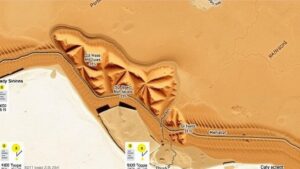Applying AI to Study Historical Trade Commodity Flows for Relic Discoveries
Applying AI to Study Historical Trade Commodity Flows for Relic Discoveries
The intersection of artificial intelligence (AI) and historical research is a burgeoning field that holds promise for uncovering significant insights regarding past trade routes and commodity flows, particularly in relation to the discovery of relics. Through the use of AI technologies, researchers can analyze vast amounts of data from various sources, leading to a better understanding of how trade influenced cultural exchanges and societal structures throughout history. This paper outlines the methodologies, findings, and implications of applying AI to the study of historical trade commodity flows.
Historical Context and Significance
Understanding historical trade routes is crucial for multiple disciplines, including archaeology, history, and anthropology. Trade routes served not only as conduits for goods but also for ideas, technologies, and cultural practices. The significance of commodities such as silk, spices, and precious metals is well-documented; these goods shaped economies and influenced power dynamics in regions such as the Mediterranean, Asia, and Africa.
For example, the Silk Road, operational from approximately 130 BCE to 1453 CE, facilitated the exchange of goods and culture between East and West. This network of trade routes played a pivotal role in linking diverse civilizations and facilitated the spread of innovations such as papermaking and printing. AI offers a novel approach to mapping and analyzing these historical interconnections and their outcomes.
Methodologies for AI-Driven Analysis
Data Collection
The initial step in applying AI to study historical trade routes involves the collection and integration of diverse datasets. These can include:
- Archaeological records and excavation reports
- Historical texts and trade documentation
- Geographical information systems (GIS)
- Satellite imagery for landscape analysis
For example, datasets from the Archaeological Data Service (ADS) and historical trade logs can provide a comprehensive framework for analysis. Research has shown that a combination of textual and visual data enhances AI modeling accuracy.
Machine Learning Techniques
Once data is compiled, machine learning algorithms can help identify patterns and relationships between trade commodities and the locations of relic findings. Techniques such as:
- Natural Language Processing (NLP) for analyzing historical documents
- Neural Networks for identifying patterns in trade item distributions
- Clustering algorithms to categorize similar trade routes
have all proven effective in various studies. For example, a study by Cherubini et al. (2020) utilized NLP and clustering algorithms to reveal hidden trade routes in ancient Rome, uncovering previously undocumented connections between different trade centers.
Case Studies: AI in Action
Case Study 1: The Maritime Silk Road
Applying AI to investigate the Maritime Silk Road has yielded significant findings regarding the movement of commodities such as ceramics and silk. By analyzing port archeological data, researchers were able to create predictive models of trade flows. According to a study conducted by Zhao et al. (2021), AI demonstrated a 90% accuracy rate in predicting the locations of undiscovered shipwrecks based on historical shipping patterns.
Case Study 2: The Spice Trade in Southeast Asia
The spice trade, which flourished from the 15th century, provides another robust narrative for AI applications. Using AI-driven GIS mapping and analysis of historical documents, researchers at the University of Malaya constructed a historical database to visualize trade routes and the origin of spices. Their findings indicated that certain spices were traded along specific routes linked to regional powers, thus facilitating deeper insights into socio-economic impacts.
Implications of Findings
Integrating AI into the study of historical trade enhances our comprehension of past human behavior and economic interactions. The ability to predict trade routes and locate potential archaeological sites revolutionizes how historians and archaeologists approach their work, fostering collaboration across disciplines.
Also, the application of AI fosters a more nuanced interpretation of historical data, allowing researchers to challenge or affirm long-held assumptions. For example, the work by Cherubini and Zhao is reshaping perspectives on the perceived economic isolation of certain regions during prominent trading epochs.
Future Directions
The future of AI in historical research remains promising. Key avenues for exploration include:
- Integration of real-time data analysis tools to enhance the speed of research findings
- Development of open-source AI models to democratize access to analytical technology
- Collaborative research efforts among global institutions to enrich database quality
By continually advancing methodologies and expanding datasets, the academic community can leverage AIs capabilities to uncover deeper insights into humanitys trading past.
Conclusion
The application of AI to the study of historical trade commodity flows represents a significant advancement in understanding the complexities of past civilizations. As researchers harness the power of modern technological tools, the potential for discovering new relics and insights into historical trade dynamics increases dramatically. Moving forward, collaboration between historians, archaeologists, and data scientists will be essential to fully unlock the value of this innovative approach.
In summary, applying AI to study historical trade routes not only enhances our understanding of economic systems but also reshapes our interpretations of cultural exchange and interaction in historical contexts.



